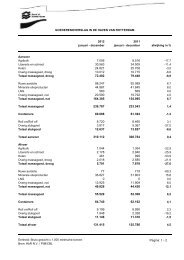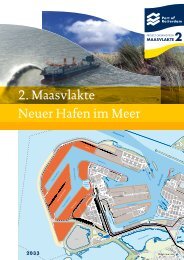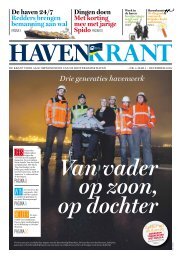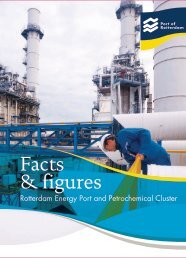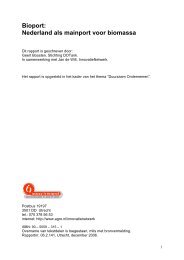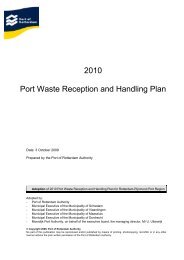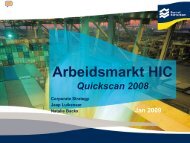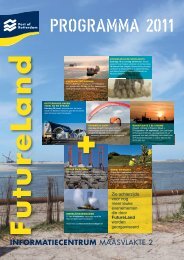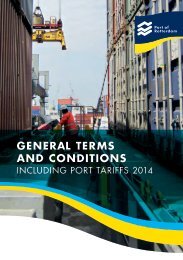PATHWAYS TO A CIRCULAR ECONOMY - Port of Rotterdam
PATHWAYS TO A CIRCULAR ECONOMY - Port of Rotterdam
PATHWAYS TO A CIRCULAR ECONOMY - Port of Rotterdam
Create successful ePaper yourself
Turn your PDF publications into a flip-book with our unique Google optimized e-Paper software.
Circular economy model for THE ENERGY SEC<strong>TO</strong>RGAS AND CARBONIntroductionThe energy sector is a major contributor to human-inducedclimate change, which according to Röckstrom, is one <strong>of</strong> thethree systems that has already exceeded the boundaries <strong>of</strong>its safe operating space. The two biggest challenges in theenergy sector are reducing emissions <strong>of</strong> CO 2(its main wasteproduct) to acceptable levels and finding alternative energysources to fossil fuel, such as natural gas.The circular economy model developed for the energysector uses alternative energy resources and minimizesthe production <strong>of</strong> waste (see Figure 5). It relies on energyefficiency improvements and biomass resources to reduceemissions <strong>of</strong> CO 21. In addition, it recovers and reuses flows<strong>of</strong> waste. Meeting the scale <strong>of</strong> carbon capture shown in themodel will be a challenge, but existing plans in <strong>Rotterdam</strong>support these numbers. Several options for businesssymbioses to exploit alternative uses <strong>of</strong> CO 2exist, andalthough small in volume, they increase value andeconomic activity.As an energy intensive area where production andconsumption meet, the <strong>Rotterdam</strong>/Delta region wants toreduce emissions and increase alternative energy usage.The region’s engaged local industry and proximity to theNorth Sea (storage) and Westland region (horticulture),give it the potential to develop carbon capture capabilitiesas well as storage and utilization solutions within the nextthree to five years. The port is vital when it comes to thesupply and throughput <strong>of</strong> sufficient biomass for energyproduction in the future.1Although biomass combustion does produce CO 2, it is considered to be CO 2neutral asthe carbon was captured shortly before emission takes place.37/73PORT OF ROTTERDAM / RABOBANK<strong>PATHWAYS</strong> <strong>TO</strong> A <strong>CIRCULAR</strong> <strong>ECONOMY</strong>




